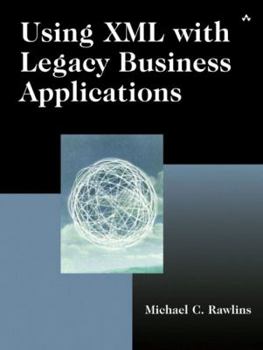Using XML with Legacy Business Applications
A practical toolkit on using XML to do business more efficiently internally and with resellers and suppliers, complete with C++ and Java code. The book intends to bridge the gap between the beginner's... This description may be from another edition of this product.
Format:Paperback
Language:English
ISBN:0321154940
ISBN13:9780321154941
Release Date:August 2003
Publisher:Addison-Wesley Professional
Length:624 Pages
Weight:2.00 lbs.
Dimensions:1.2" x 7.0" x 9.2"












